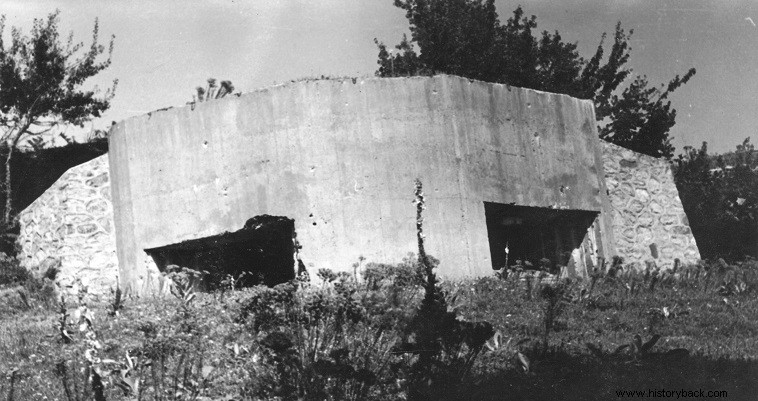
At the start of the German operations against Greece on the Greece-Bulgaria border, a gigantic, in terms of resources and difficulty of implementation, defense project had been largely completed. Its purpose was to protect the country from sudden hostile action on the part of Bulgaria. The end result was impressive. From the total of 417 kilometers of the Greek-Bulgarian border, the fortified site covered, with various projects, 215 kilometers. The backbone of this line was twenty-one, modern for the time, autonomous, enclosed forts which had the possibility of defense in all directions. The forts, together with the works that complemented them, later became known as the "Metaxa Line".
The political and military arguments for the criticality of border fortification arose from the geography of the country as northern Greece was – and is – easy to attack from the side of Bulgaria and the then Yugoslavia at three points. These points, from east to west, are the Strymonas crossing, the Axios valley and the Monastery crossing. Any invasion by an invader through the 2 valleys would immediately result in the occupation of Central and Eastern Macedonia as well as western Thrace. In conclusion, in the absence of the necessary strategic depth in northern Greece, avoiding a surprise attack by all means was vital.
The design of the Greek-Bulgarian border fortification was implemented based on certain fundamental assumptions:
a) The fortification envisaged the initial confrontation of an opposing Army with organization and capabilities such as those of the neighboring Balkan countries (Bulgaria), which were known, specific and clearly limited in relation to those of the Western armies of the major states (Britain, France, Germany, Italy )
b) The passive defensive capabilities that the line of forts would provide would be utilized through counterattacks by the regular Greek Army, which would, in addition, cover the flanks of the defensive arrangement and provide the necessary close protection to the forts against enemy occupation actions.
c) The defense of the location would be supplemented by the rear artillery, whose positions, like the supporting fire sectors, had been identified and organized in depth. Attacking the forts from the air would be prevented by air cover with fighter planes.
From the foregoing it is clear that the forts were designed to function as part of an overall plan of active and passive defense in which reserves played a vital role. The absolutely crucial factor and necessary condition of any defense plan was that under no circumstances would enemy forces pass through from Yugoslavia which could potentially reach the flanks and rear of the Aliakmons defense line and cut off from the continental body all the forces which would defend from Thessaloniki to Thrace.
Despite the strategic importance of the location and despite the lessons of World War I until 1935, due attention had not been given and there were no comprehensive studies on the defensive organization of the terrain. In 1935, after the Italian invasion of Ethiopia, it was understood that the international security environment was deteriorating daily. In 1936, with the assumption of the government of the country by Ioannis Metaxas, the defensive fortification projects of the Greek-Bulgarian border were judged as projects of major national importance and began to be implemented at a frantic pace. Metaxas had his own opinion on the importance of the specific area, a fact that led him to an unprecedented effort to complete the projects, which had no precedent in the history of the Greek Army and the Engineers in particular.
In order to speed up the completion times of the fortifications as much as possible, all the stages of implementation were often merged:the construction study, the excavation on the ground and the building work together with the necessary construction of passages for the transport of the materials. Time pressure grew as the international civil-military situation worsened. The completion of the projects was significantly hampered by the need to overcome almost insurmountable territorial limitations, a consequence of the fact of choosing the location of each one. Ridges and mountain passes, extremely inaccessible mountainous terrains which until then had no road access.
Even the transport of the necessary building materials to the sites was a task for the completion of which even camels were used, as more durable and able to carry large loads in this type of soil. In addition, the process of procurement of materials, both for the construction and for the military equipment of the forts, encountered significant problems due to delays in deliveries on the part of foreign suppliers who were already facing pressure from the governments of the countries in which they were based.
The numbers are indicative of the size of the projects and the effort:1.5 billion drachmas (1939) or 10% of the country's annual budget, 115 km of opening and construction of new roads, 92 km of repairing the old network , 24 km of underground galleries, 13 km of underground living facilities, 900,000 cubic meters of excavation, 66,000 tons of cement, 12,000 tons of iron washing, 180,000 cubic meters of concrete, 17 km of ventilation pipes, 75 km of water pipes, 90 km of barbed wire.
The "Metaxa Line" included twenty-one autonomous forts, advanced organized defense positions, such as artillery and gun emplacements with or without canopies, artillery observation posts, and the usual campaign works, such as lines of anti-tank barriers and barbed wire, battle trenches, and communication trenches. Anti-tank obstacles included a combination of ditches, concrete cones (dragon's teeth) and rails cemented in the center (echinos) Great importance was placed on communications, as each fort had more than two different lines of communication both with other forts and with the positions of the Headquarters in the rear and the Artillery Commands.
The cables of the telephone lines, 1,216 kilometers of lines outside the forts, had been laid at two meters, a depth which, in retrospect, proved insufficient for protection against bombardment. The forts had 10 days autonomy in food and drinking water. The living facilities provided all the necessary facilities while the air was filtered by special devices. The power supply of the machines, the transmissions and the lighting were ensured by electric generators.
In 1941 the fortification works were almost completed. On the eve of the German invasion, the situation was as follows:the only fortress that was considered incomplete was Popotlivica, which, however, provided the possibility of resistance. The works of the Rupel complex were almost complete except for minor additional spine defense works, the Kali fort was almost finished except for a second line work while all the other forts were considered complete in terms of construction works. As soon as the possibility of the German threat became apparent, the fortification works were extended westward from Lake Doirani to the eastern bank of the Axios river, but under the pressure of time, only limited campaign works such as anti-tank ditches and some concrete ground works were implemented.
The forts were manned by 329 Officers and 9,740 enlisted men who had been placed in them much earlier than the start of the German operations. The locality of most of the hoplites, the time they had to familiarize themselves with the forts and the daily training under the instructions of the fort Commanders made them a deadly force against any enemy. In more than one case the soldiers of the forts fought in conditions of complete darkness or cleared the outer areas of the forts without the assistance of reserve forces.
However, if the human resources were complete and ready for war in terms of the stocks of the forts in war material (ammunition, armament, spare parts for armament as well as other necessary materials) significant shortages were observed. Shortages were in critical materials:ammunition stocks, spare machine guns and anti-aircraft guns. All shortages were known but unavoidable as a large part of the stock of ammunition and number of armaments had earlier been transferred to the Albanian Front for the repulsion of operation "PRIMAVERA" and was not replenished or returned.
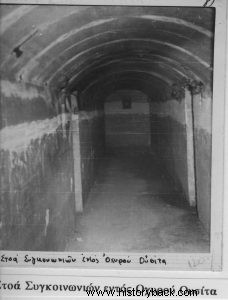
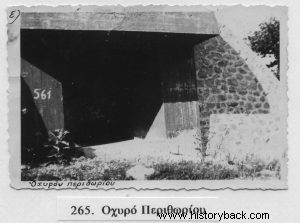
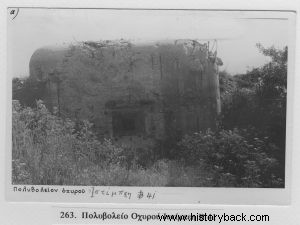
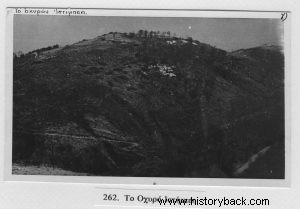
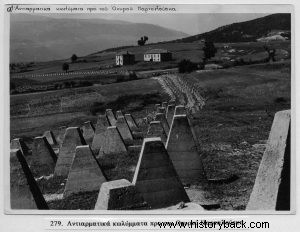
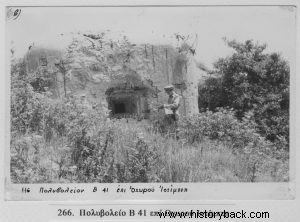
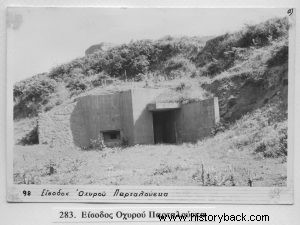
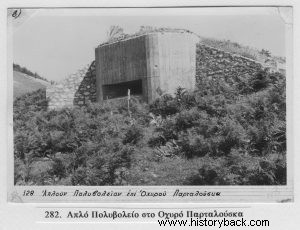
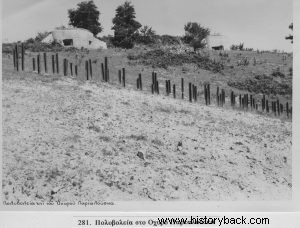
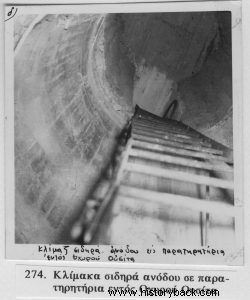
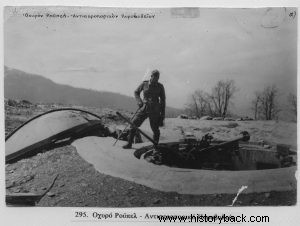
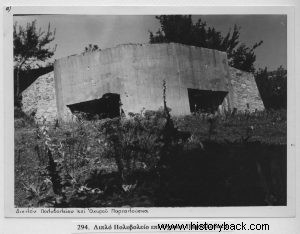
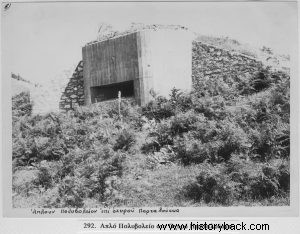
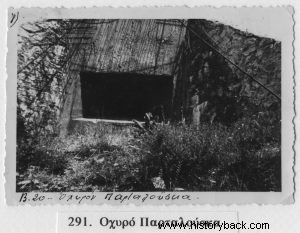
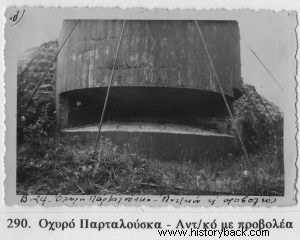
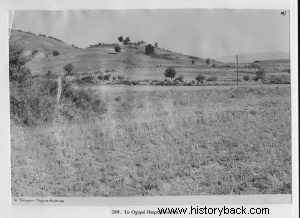
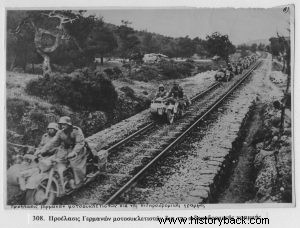
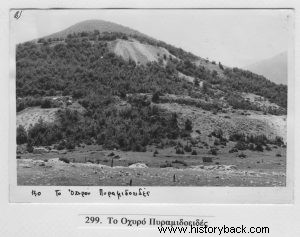
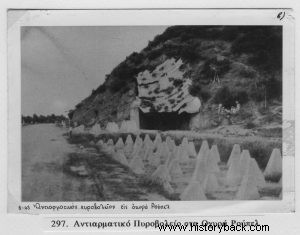
SOURCE:GES
